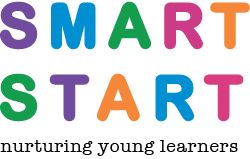SMART START young learners embarked on an expedition around the globe! From touring the United States to "studying abroad", our young learners fully embraced this introduction to Geography.
Come join us on our travels below! 🛪
Our journey began right here in the U. S.! Classmates collaborated to complete a puzzle displaying all 50 states and capitals- Linked Here. We discussed the famous landmarks pictured on each piece and the various places pupil have visited. Future historians were most intrigued by the Statue of Liberty in New York and the Liberty Bell in Pennsylvania.
The New England state of Massachusetts was highlighted during outdoor circle time. MA is currently home to our school and students. The book "I Am Massachusetts" which portrays numerous cities and sights was read aloud to the group. The class conversed about their favorite spots in the state such as Cape Cod, Newburyport, Salem and the capital, Boston.
Time to leave the continent.... Next stops Europe, Asia, South America and more! SMART START tourists selected an activity page featuring a country of their choice. Vocabulary was expanded through word searches, cognitive abilities were enhanced travelling in mazes and fine motor skills challenged via handwriting. This lesson provided a glance into diverse cultures and customs worldwide.
Eager Geographers concluded this unit through a variety of fun and games! Friends inflated a blue ball and used a globe to accurately place continent and ocean stickers. Afterwards, all played "Wonder Globe" (Sit in a circle, play music, pass globe, stop music, person holding globe picks a continent that they wish to visit). "Points on the Map" was enjoyed next (Hang up large map, line up, close eyes, one at a time approach map and point, open eyes, see which state/country is landed on). Lastly, the inflatable globe was incorporated into water play. While splashing in the sprinkler and sliding down the waterslide, peers pretended they were on the five major oceans: Indian Ocean, Atlantic Ocean, Pacific Ocean & the Arctic Ocean.
Educating children about the world around them is an essential component of SMART START's curriculum. These teachings aim to instill a sense of wonder into our young learners and to ignite their natural desire to explore and discover. We hope you enjoyed accompanying us on our global adventure!
🌎SMART START🌎



































